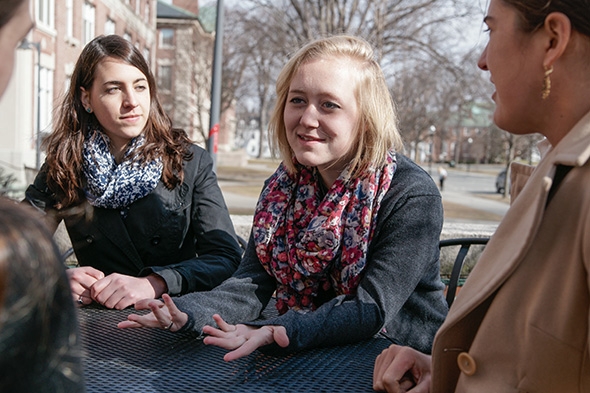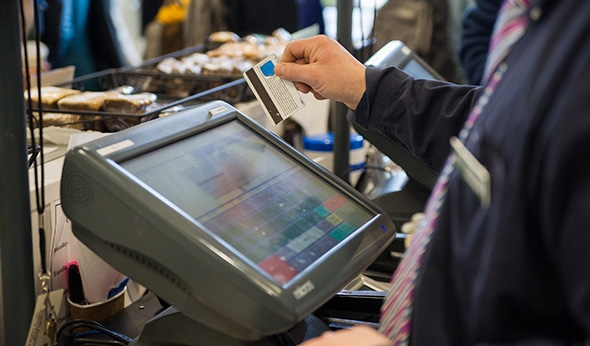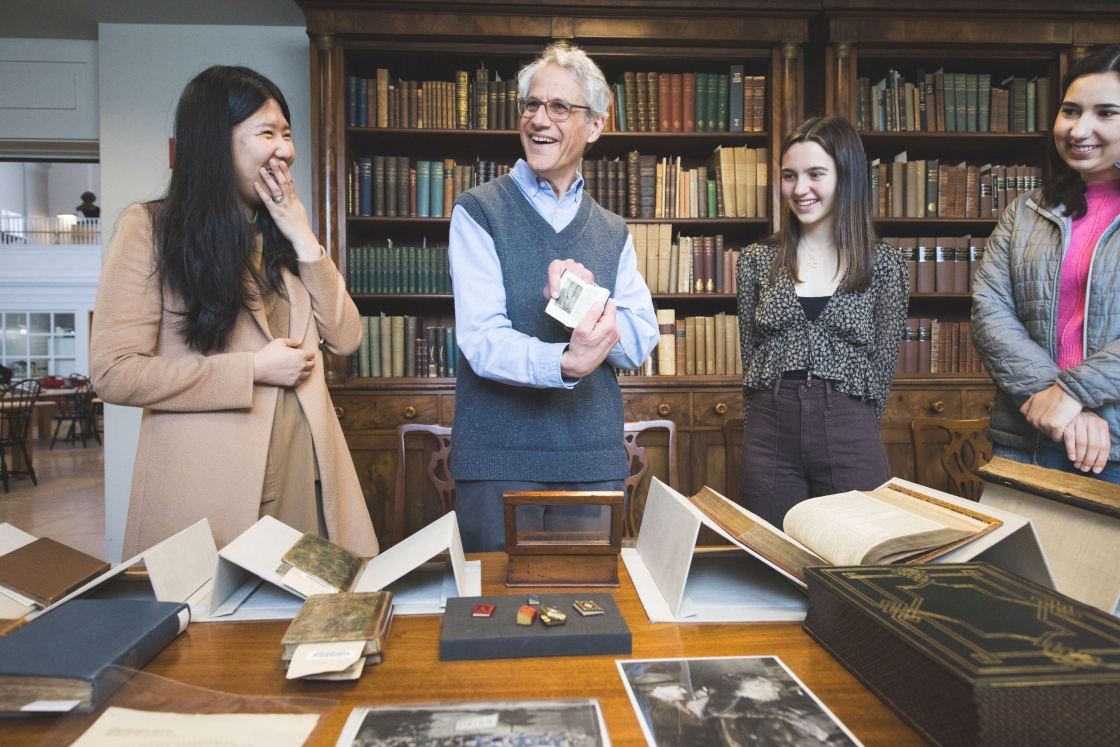In the spring of 2010, Willing Hands Director Heather Bagley got a call from Dartmouth student Sarah-Marie Hopf ’13 offering to donate several boxes of fresh vegetables to help with the organization’s mission of distributing free, wholesome food to “neighbors in need.” She sent a truck right over.

“We don’t typically make pickups of that size from individuals,” Bagley says. “But I thought, well, this is such a generous-spirited thing to do, we’ll go ahead this one time. Little did we know where it would lead.”
From that first donation, purchased with leftover dining plan money, Hopf, along with Katherine Burns ’13, established Dartmouth Food Connection, initially to educate the Dartmouth community about food insecurity in the Upper Valley, and through a partnership with Dartmouth Dining Services, enables students to donate to Willing Hands through meal swipes and food drives.
To date, through “Swipe for Hunger” events, awareness campaigns, and food drops, the Dartmouth Food Connection has raised $11,000 for Willing Hands, which distributes fresh food to people in need through 58 organizations around the Upper Valley. Fresh, wholesome food is trucked to emergency shelters like the Upper Valley Haven, food banks, and community kitchens six days a week, Bagley says.

John Lyons, an associate professor of anatomy at the Geisel School of Medicine, is president of Willing Hands. He called the work of Hopf and Burns—in building the connection between Dartmouth and those in need in the wider community—vital and inspiring.
“I think it is a wonderful demonstration of the social conscience and abilities and enthusiasm of Dartmouth students and the community,” he says.
Lyons and Bagley hope the Dartmouth Food Connection will continue after Burns and Hopf graduate.
“It will be wonderful if the project can be institutionalized as a permanent Dartmouth program,” Lyons says.
Making It Real
In March, Dartmouth Food Connection member Allison Armstrong ’13 organized the “Love Food, Hate Waste” event at Class of ’53 Commons to let students see how much food goes to waste in the dining hall and to promote participation in the “Swipe for Hunger” fundraiser.
About 375 pounds of untouched food, collected in just 30 minutes from the conveyor belt after students dropped off their plates for disposal, were set out on a dining table in ’53 Commons. The food wasted in 30 minutes would feed a family of four in the Upper Valley for 25 days, Hopf says.
“We displayed the plates and contrasted them with a week’s worth of food donations that a family of four receives from the Haven,” Hopf says. “The visual displays sought to make students stop and think about these issues and their own practices and encourage them to make a donation to fight local hunger.”
Lily Michelson ’15 calls the display “shocking.”
“I assume that people waste a lot of food, but I didn’t realize that people waste an entire meal. It’s not scraps of food; it’s an entire meal. It’s like taking a perfectly good apple and throwing it in the trash for no reason.”
During the evening, Annie Munger ’13 played a documentary showing what happens behind the conveyer belt as Dartmouth Dining Services workers deal with the food waste and clean the dishes.
The following night, the Dartmouth Food Connection invited students to donate a meal swipe—the equivalent of $13.95—directly to a fund for Willing Hands. The event raised $1,451.35, bringing the total to more than $11,000 raised so far for the food distribution program. That translates to about 210 crates of fruits and vegetables for hungry people in the community, Lyons says.
Students can also purchase food with dining credit and put it directly in a donation box. Hundreds of pounds of food have been collected that way as well.
Logistics and Results
Hopf and Lyons both credited Donald Reed, associate director of Dartmouth Dining Services, with making it possible to direct food service funds to Willing Hands. When Hopf first struck upon the idea of harnessing dining plan waste, she thought in terms of collecting purchased items.
But after negotiating with Dartmouth administrators, she got in touch with Reed, who was able to work out the logistics of setting up a dedicated meal swipe system that could direct the money into an account for Willing Hands.
In the winter of 2012, the Office of the President, with the Palaeopitus Senior Society, awarded the 2012 Kramer Prize to Hopf and Burns, providing $3,000 for the Dartmouth Food Connection to expand their efforts to “enable Dartmouth community members to interact meaningfully with each other and the local community, using food as a medium,” by partnering with Dartmouth Dining Services.
Hopf says it all began with a class in her first spring term at Dartmouth that examined the politics of food.
“It drove home the idea of local hunger and food insecurity and what a place of privilege we come from here at Dartmouth and how we have so much potential to make a positive contribution to the Upper Valley community,” she says. “I thought it can be as simple as using your dining money to purchase food for people, and that’s what I did.”
